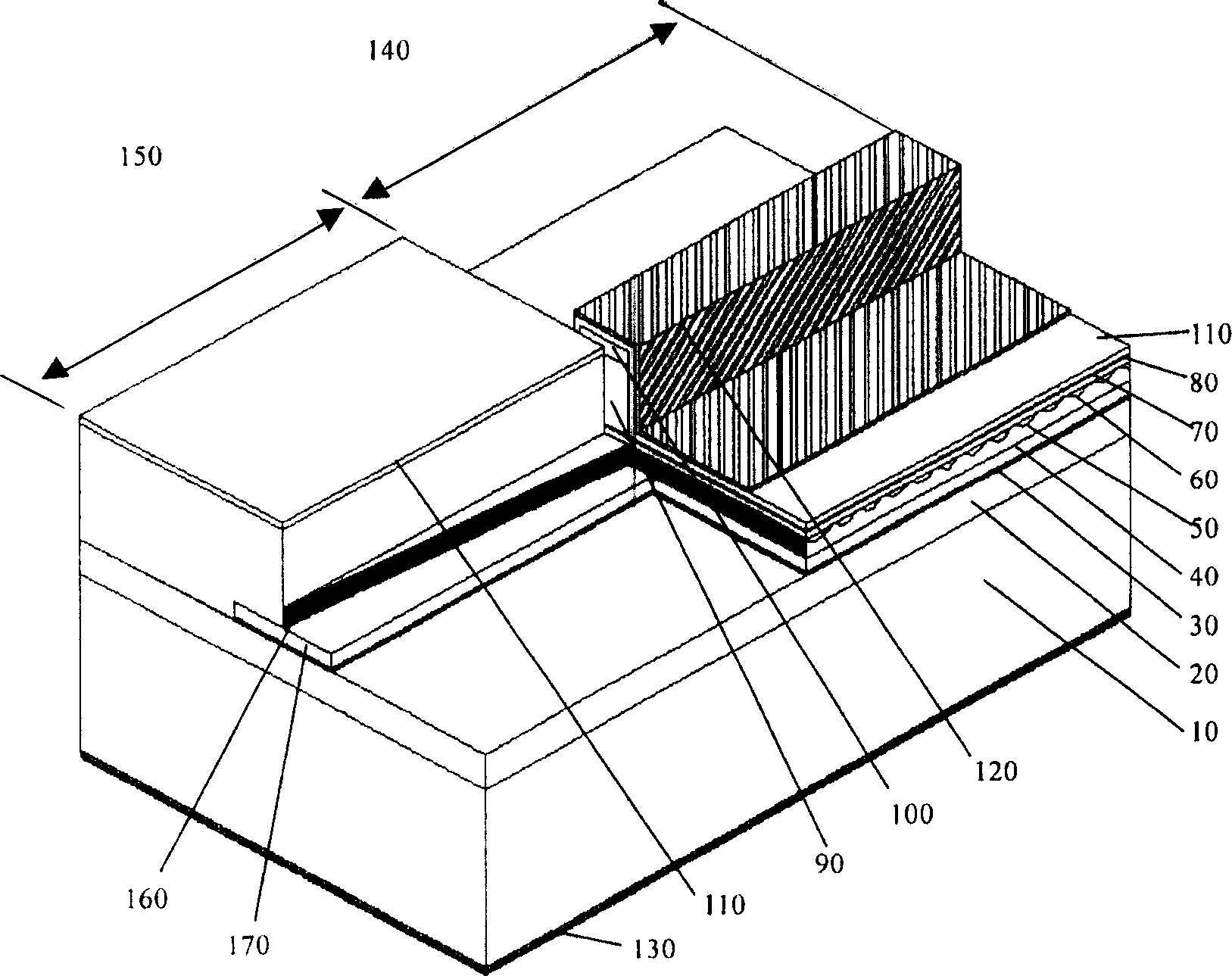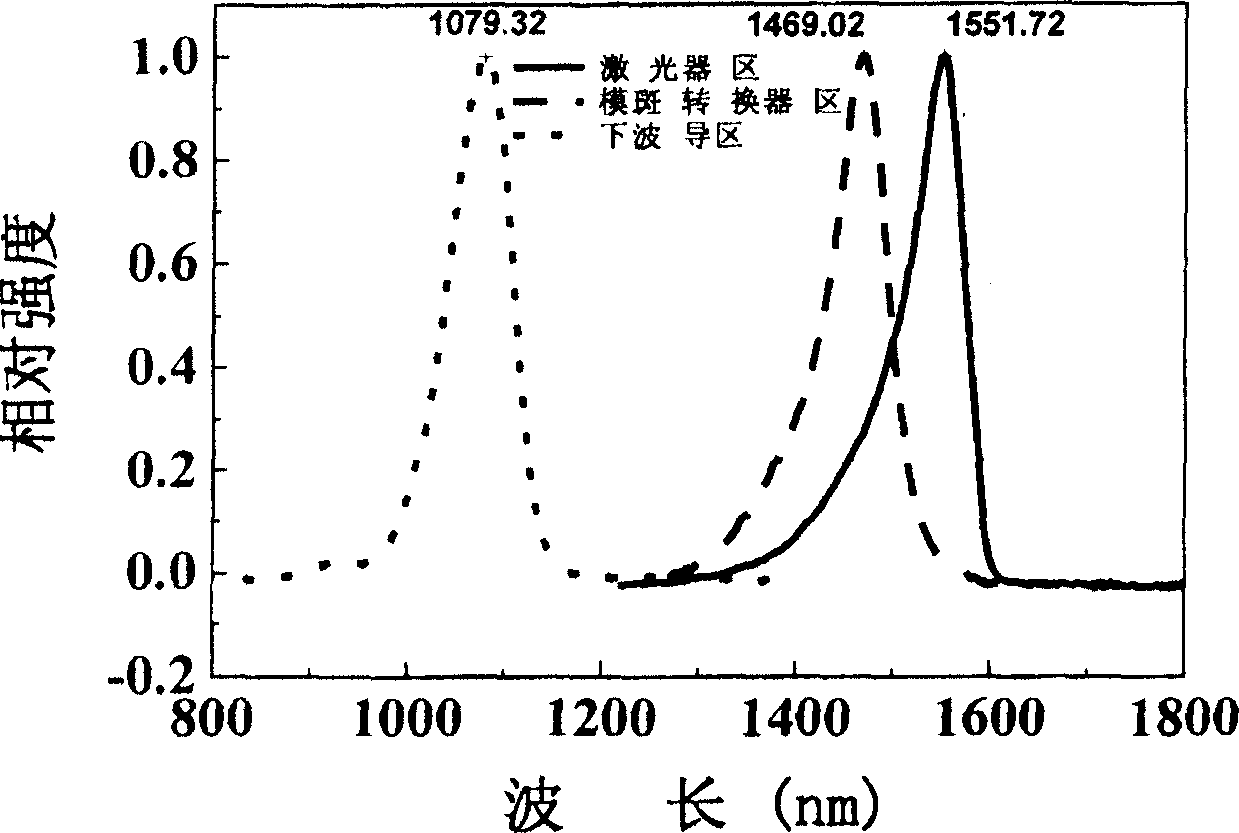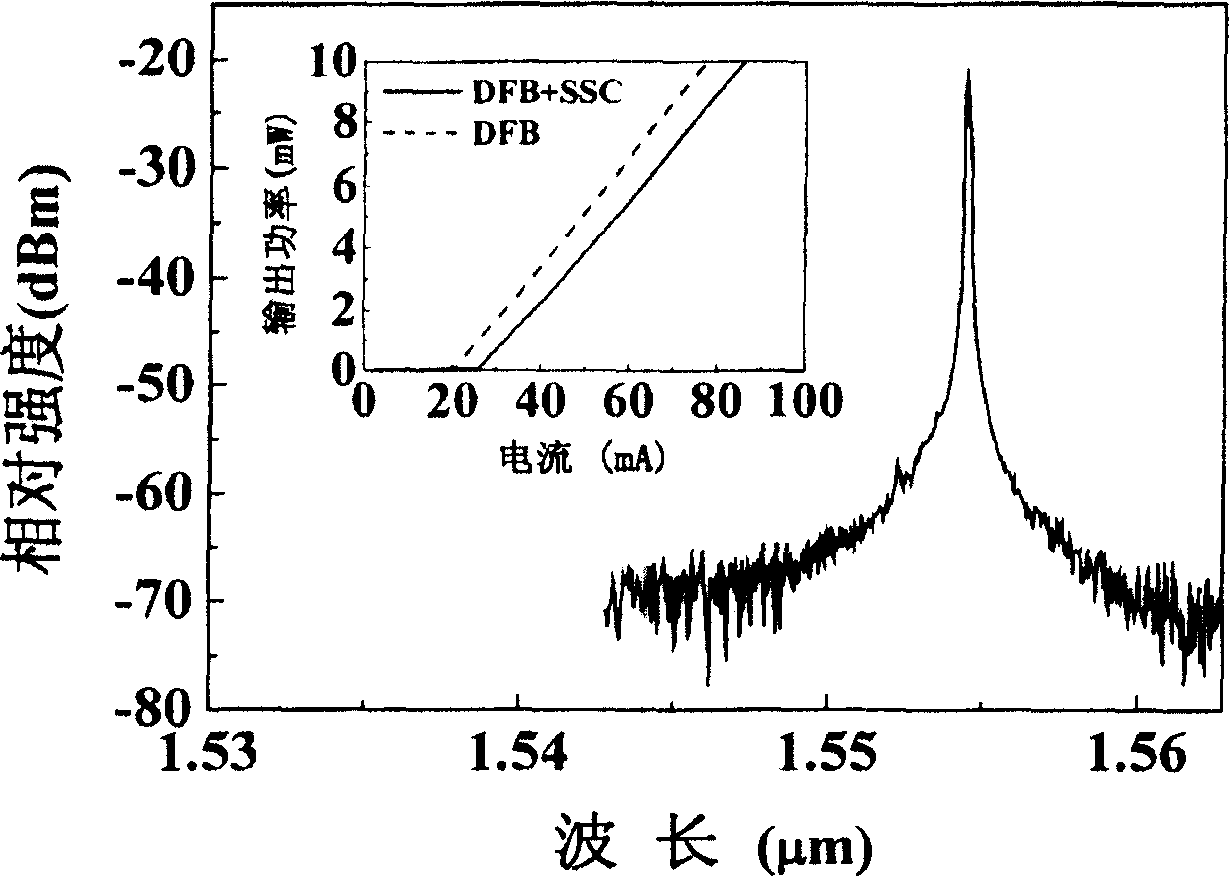Method for making modular spot converting distributed-feedback Prague laser by using quantum trap confounding
A quantum well hybrid and mode-spot converter technology, which is applied in the direction of lasers, phonon exciters, laser components, etc., can solve the problems of small process tolerance, increased radiation loss, and low reliability of devices, so as to reduce crystal growth the number of times, reduce the effect of Auger complex, and reduce the number of growth
- Summary
- Abstract
- Description
- Claims
- Application Information
AI Technical Summary
Problems solved by technology
Method used
Image
Examples
Embodiment
[0074] see again figure 1 , the present invention uses quantum well hybridization as a method for mode spot conversion distributed feedback Bragg laser, characterized in that it comprises the following manufacturing steps:
[0075] (1), the 2-inch n-InP substrate undergoes strict decontamination (heating and boiling with ethanol, trichlorethylene, lactone, and ethanol in sequence) → pickling (soaking in concentrated sulfuric acid for 1 to 2 minutes) → water washing (deionization Rinse with water for more than 50 times) → throw it after treatment, put it into the growth chamber, the growth temperature is 655°C, the growth pressure is 22mbar, and the graphite boat rotates at 75-80 rpm. Growth rate 0.4~0.7nm / s;
[0076] (2) On the surface of n-type indium phosphide substrate (100), epitaxially grow n-type indium phosphide buffer layer (0.5 μm thick), lower waveguide layer (thickness 50 nm, bandgap wavelength 1.1 μm), 0.2 μm phosphorus Indium space layer, lower optical confineme...
PUM
 Login to View More
Login to View More Abstract
Description
Claims
Application Information
 Login to View More
Login to View More - R&D
- Intellectual Property
- Life Sciences
- Materials
- Tech Scout
- Unparalleled Data Quality
- Higher Quality Content
- 60% Fewer Hallucinations
Browse by: Latest US Patents, China's latest patents, Technical Efficacy Thesaurus, Application Domain, Technology Topic, Popular Technical Reports.
© 2025 PatSnap. All rights reserved.Legal|Privacy policy|Modern Slavery Act Transparency Statement|Sitemap|About US| Contact US: help@patsnap.com



